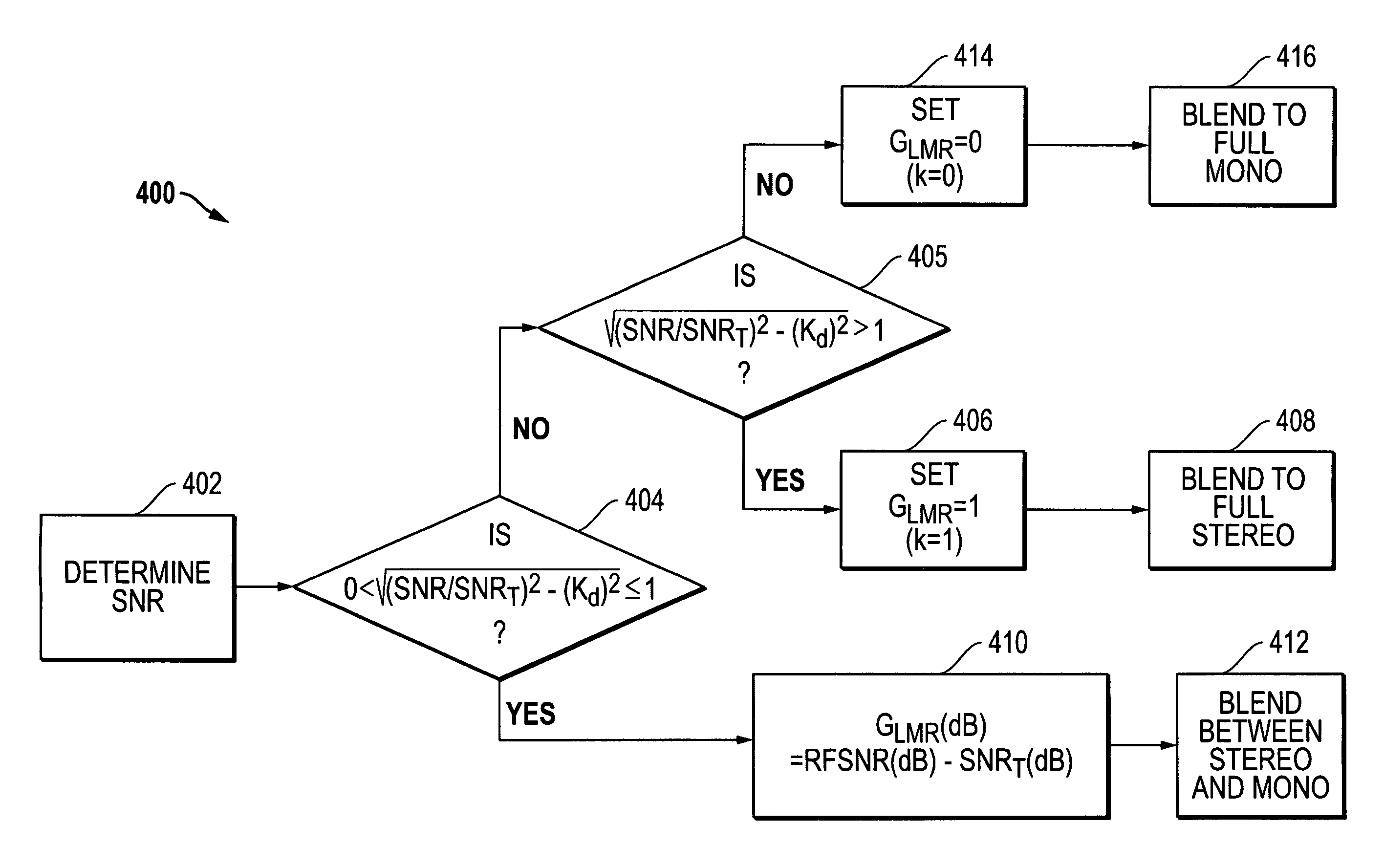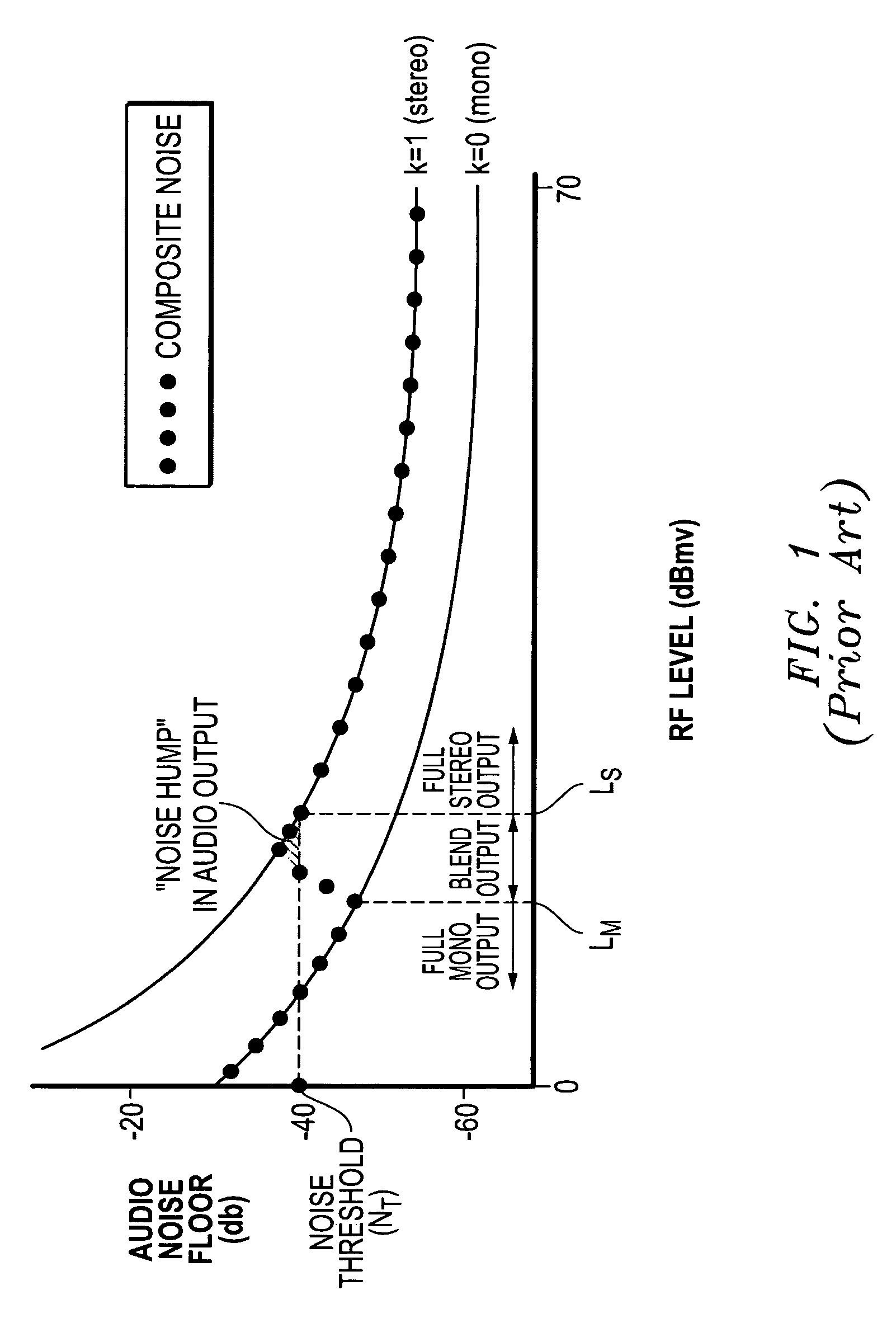Methods and systems for blending between stereo and mono in a FM receiver
a stereo receiver and stereo technology, applied in the field of stereo receivers, can solve the problems of increased noise level and noise in the fm broadcast band receiver, and achieve the effects of reducing lr gain, maintaining and maximizing audio snr, and reducing total nois
- Summary
- Abstract
- Description
- Claims
- Application Information
AI Technical Summary
Benefits of technology
Problems solved by technology
Method used
Image
Examples
embodiment 100
[0017]FIG. 2 is a block diagram for an embodiment 100 including a digital signal processor (DSP) 106 that controls blending between stereo and mono audio output, for example, in a FM receiver. In the embodiment depicted, an FM signal spectrum 116 including a plurality of FM channels is received by analog receive circuitry 102. The output of the analog receive circuitry 102 is provided to the low-IF conversion circuitry 104. The digital output of the low-IF conversion circuitry is then processed by the DSP 106 to produce digital and / or analog audio output signals. For example, the DSP 106 can produce stereo output signals in the form of a left (L) channel signal 112 and a right (R) channel signal 114.
[0018]As described herein, the DSP 106 further provides for processing of the digital signals to blend between stereo and mono based on a determined L−R gain value (GLMR), which is equivalent to k in the stereo blending equation. As described above, a mono output is typically created by ...
embodiment 400
[0055]FIG. 5 is a flow diagram of an embodiment 400 for determining GLMR and blending from stereo to mono based upon the GLMR determination. As shown in FIG. 5, the SNR of the received FM broadcast signal is determined in block 402. Next, in step 404, the value of √{square root over ((SNR / SNRT)2−(Kd)2)}{square root over ((SNR / SNRT)2−(Kd)2)} is determined. Kd is the ratio of the output signal including the L−R energy to the output signal including the L+R energy, and SNRT may be, for example, a pre-selected RF SNR value that corresponds to a selected audio noise SNR threshold below which blending away from full stereo is desired. SNRT may be selected, for example, from an empirical correlation of audio noise SNR values versus corresponding RF SNR values derived from testing of the RF receiver circuitry. Table 1 is an example correlation of audio noise SNR values versus corresponding RF SNR values, in which there is a 1:1 relationship between audio SNR and RF SNR. Although such a line...
PUM
 Login to View More
Login to View More Abstract
Description
Claims
Application Information
 Login to View More
Login to View More - R&D
- Intellectual Property
- Life Sciences
- Materials
- Tech Scout
- Unparalleled Data Quality
- Higher Quality Content
- 60% Fewer Hallucinations
Browse by: Latest US Patents, China's latest patents, Technical Efficacy Thesaurus, Application Domain, Technology Topic, Popular Technical Reports.
© 2025 PatSnap. All rights reserved.Legal|Privacy policy|Modern Slavery Act Transparency Statement|Sitemap|About US| Contact US: help@patsnap.com



